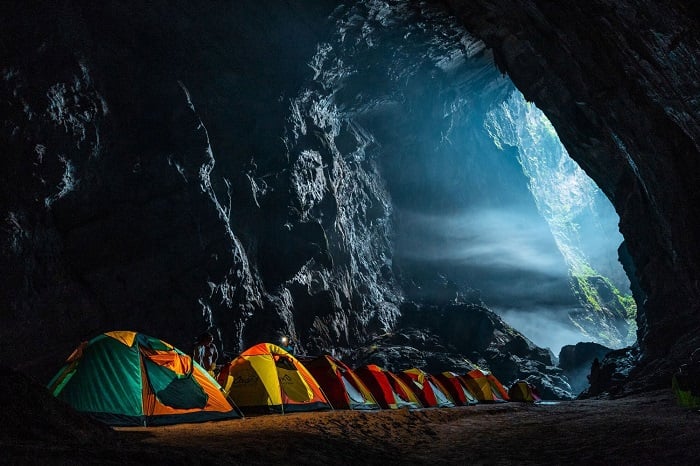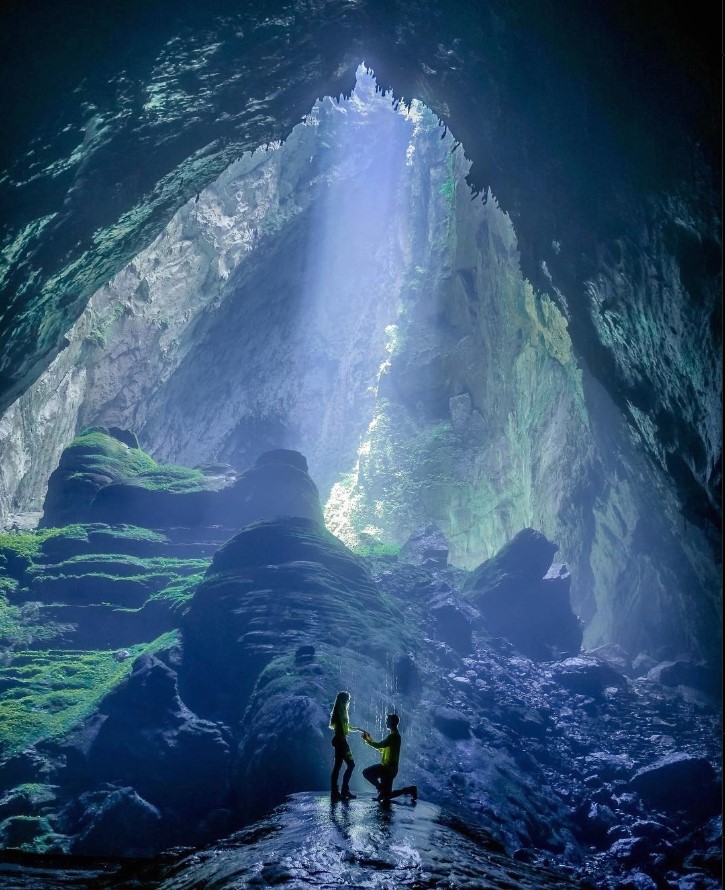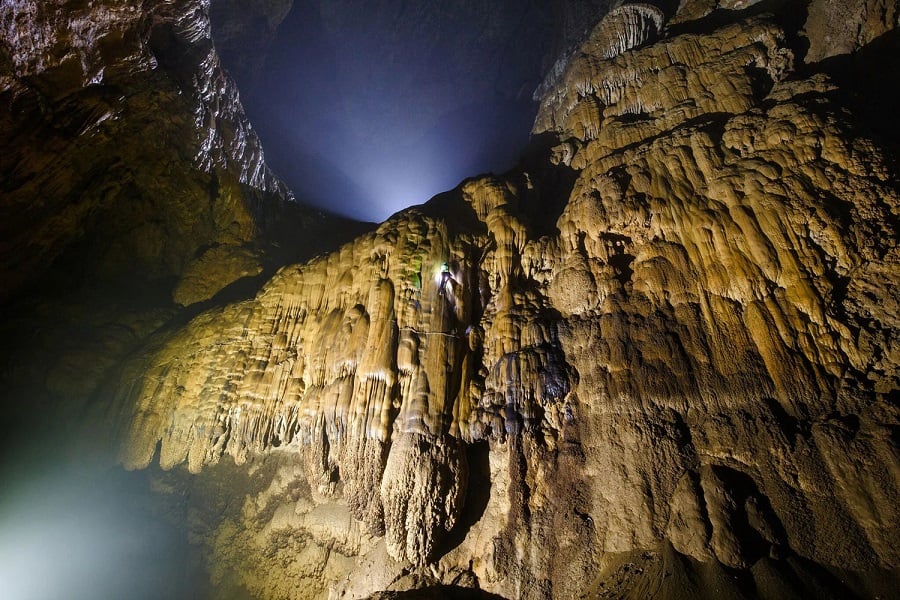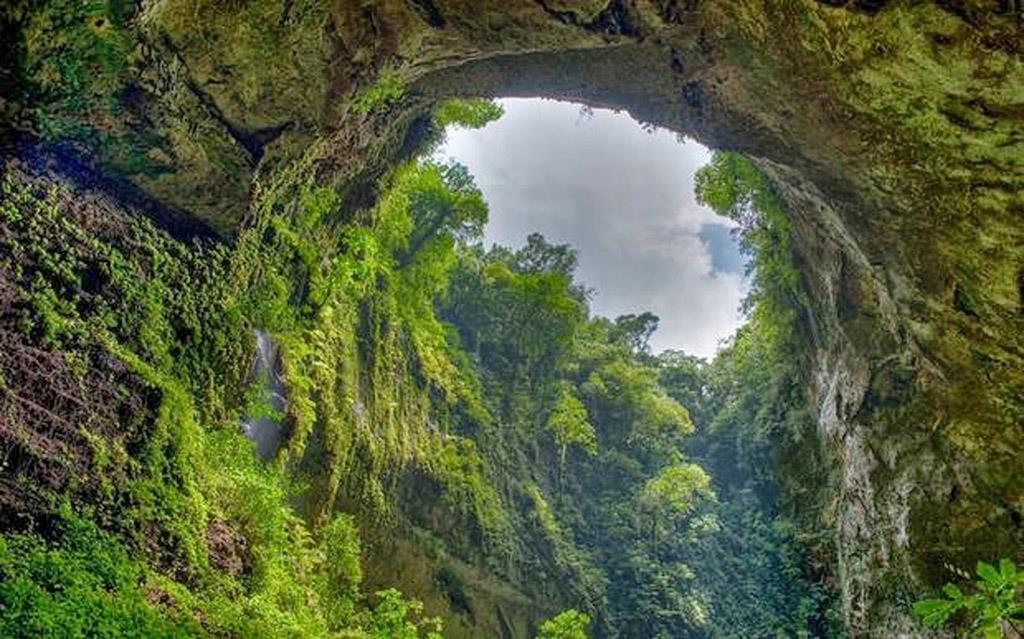Son Doong Cave is the largest natural cave in the world, renowned for its majestic and impressive landscapes. It is the only place currently recognized by all three organizations: Guinness World Records (UK), the World Record Association (USA), and the World Record Society (Hong Kong), as a global record holder
Contents
1. Where is Son Doong?
Son Doong Cave, located at coordinates 17°27’25.88″ N; 106°17’15.36″ E Central Vietnam, is nestled deep within Phong Nha – Ke Bang National Park. This cave is one of Vietnam’s most famous tourist destinations and is part of a vast underground system connected to over 150 other caves near the border with Laos.
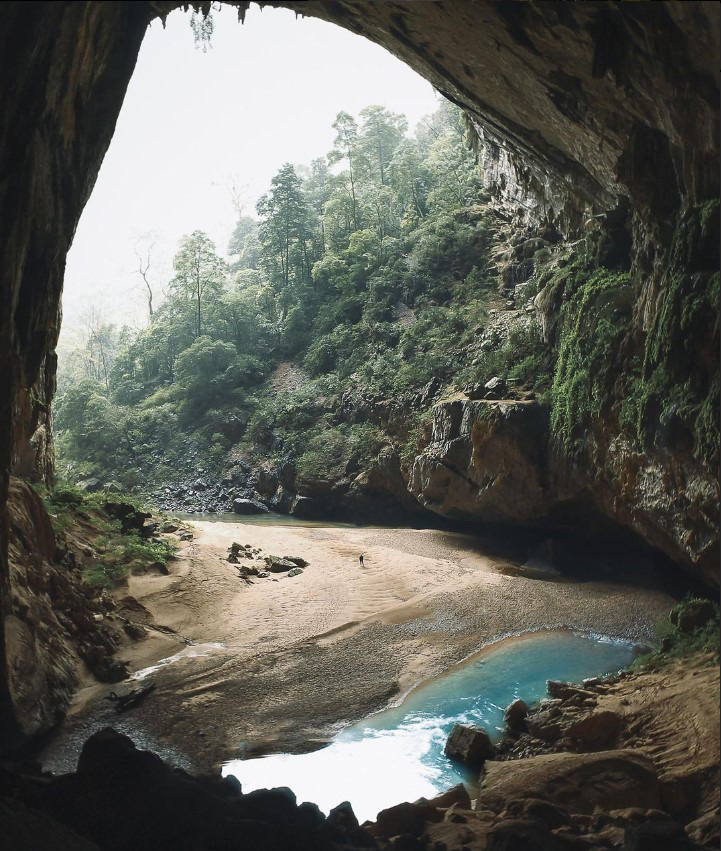
To reach Son Doong cave, visitors must undertake a challenging journey of over 12 kilometers, passing through streams, steep slopes, and the lush green forests of Phong Nha – Ke Bang. Along the way, you can also visit Đoong Village, where an ethnic minority community lives with their unique culture.

Son Doong cave is also like a dream brought to life, a world so unique it can be compared to the world in the movie Avatar. Here, you’ll experience the breathtaking beauty of one of the most incredible natural wonders on Earth.
2. History of Son Doong
The formation of Son Doong has occurred over hundreds of millions of years due to geological changes. The cave is part of the oldest limestone mountain range in Southeast Asia, which formed over 400 million years ago. The world’s largest cave, Son Doong, is estimated by scientists to have formed around 2-3 million years ago.
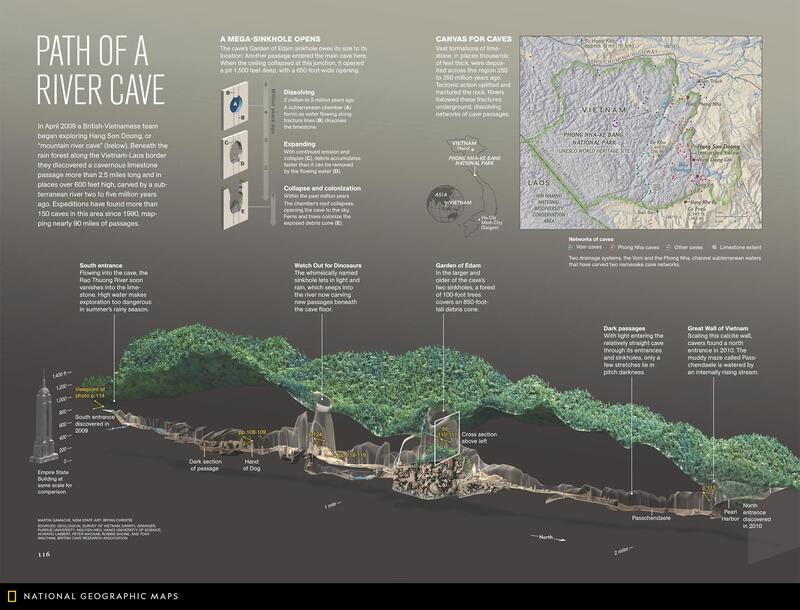
Son Doong was created along a fault line in the Truong Son mountain range and has been gradually eroded by the Rao Thuong River over millions of years. Due to the river’s water, containing carbonic acid, seeped into the limestone, carving out the enormous tunnel beneath the ground and cracks in the cave’s ceiling were eroded and collapsed, creating large skylights that opened to the outside.
Inside Son Doong Cave, an underground river flows through it. Each year, during the rainy season, a large amount of water and strong currents further erode the cave, making it even more expansive. That processes shaping Sơn Đoòng are still ongoing today.
3. What was inside Son Doong Cave 5 million years ago?
Doline 1: Dinosaur’s Roar

This is an area where the cave ceiling collapsed, creating a large skylight that opens to the outside. The lowest point is 450 meters from the rim of the collapse to the cave floor. This is also where the underground river disappears.
On sunny days, sunlight enters the cave through this skylight from around 11 a.m. to nearly 1 p.m. Especially between January and March, the sunlight passes through into the cave, making the cave more radiant than ever. It also combined with the mist creates a unique, mystical scene found nowhere else.
Many people say this area looks like another planet, while others think it resembles something from the movie Avatar.
Doline 2: The Garden of Edam
Located about 1 km from Doline 1, Doline 2 features a primeval forest deep inside the cave, 200 meters below the limestone mountains. After passing through Doline 1, you’ll see a dirt slope inside the cave leading to the forest. The path is lined with ferns, making it feel like you’re walking into a fairytale garden. The forest is filled with towering ancient trees, and it takes over 30 minutes to walk through the forest to reach the Doline 2 camping area.
Passchendaele Hallway
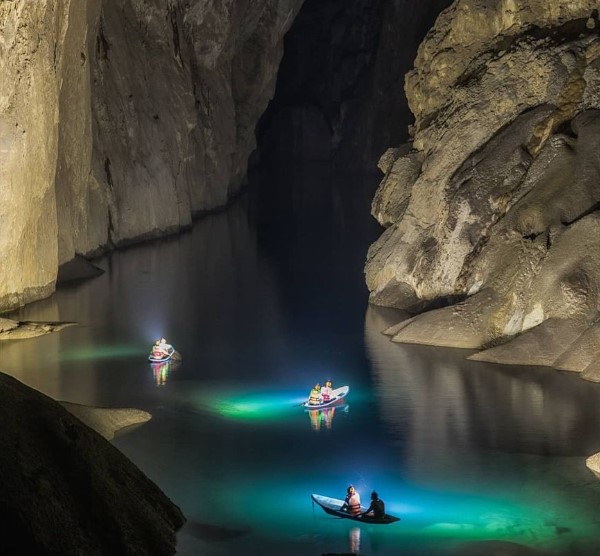
This is a lake located beneath the Great Wall of Vietnam, stretching over 600 meters. When the first exploration team reached this area, the lake was completely dry, leaving some places a muddy path that was waist-deep. The team had to struggle through this 600-meter-long mud-filled path, which reminded them of the Battle of Passchendaele in World War I. As a result, they named this challenging passage the “Passchendaele Hallway.” However, during other months of the year, or after heavy rains, the water fills up the dry stream, forming a large, beautiful emerald lake. During these months, tourists use rafts and boats to navigate through this area. You can learn more about Passchendaele Hallway here.
The Great Wall of Vietnam

In April 2009, after nearly 10 days of surveying and mapping, the exploration team encountered a massive stalagmite that blocked all further progress. Due to its grandeur and seemingly endless height, the explorers were unprepared, and their equipment was insufficient to conquer it. All team members had to turn back. At that time, no one knew what lay beyond this massive wall or how far it extended, so the exploration team decided to name it “The Great Wall of Vietnam” to reflect its magnificence.
4. Travel Tips for Son Doong
Stuff for the Journey
Essential items include a backpack, trekking clothes, warm clothing, sun protection, swimwear, hiking shoes, sandals, sunglasses, sunscreen, mosquito repellent, personal hygiene items, a water bottle, camera, tripod, gloves, earplugs, etc.
The Best Time to Visit
April to May is the best time, as forest flowers bloom, and visitors can also witness layers of clouds and mist inside the cave.
Best Things to do in Son Doong Cave
- Camping in one of the world’s most beautiful caves.
- Swimming in the underground lake and river.
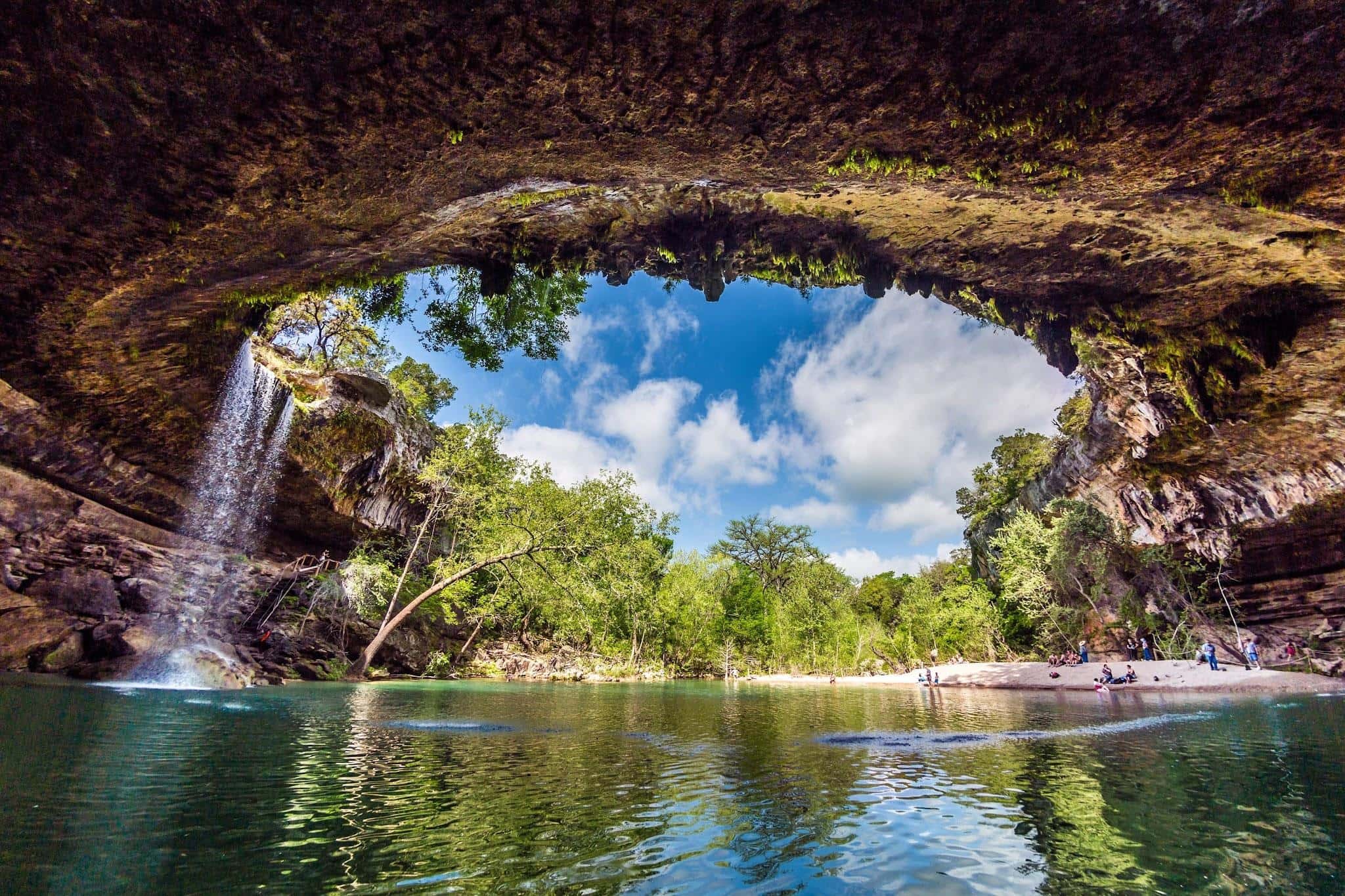
- Taking Instagram-worthy photos with breathtaking backdrops.
- Conquering the Great Wall of Vietnam.
- Exploring the diverse ecosystem inside the cave.
Exploring Son Doong Cave is a journey into a hidden world, showcasing Earth’s ancient beauty and immense natural wonders. It reminds us of the importance of preserving such pristine environments. Son Doong isn’t just an adventure; it’s a profound experience of nature’s untouched majesty.


